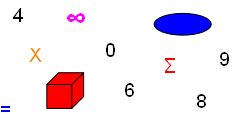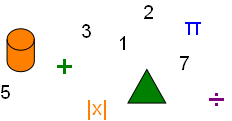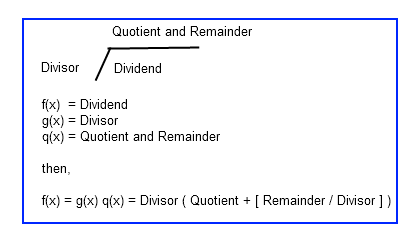



Long Division of Polynomials


Polynomial long division is similar to long division of basic math, however polynomials have multiple terms.
How to Solve a Polynomial Division Math Problem
When we use long division math:
Quotient and Remainder
Divisor / Dividend
2 R 1
3 / 7
− 6
1
The answer is 2 + Remainder.
Remainder = 1/3, therefore the answer is 2 + 1/3 or 2 1/3.
To prove this:
3 (2 + 1/3) = 6 + 1 = 7
Use the same approach for division of polynomials.

Polynomial long division similar to basic math.
To solve a polynomial division problem:
(2x3 − 7x + 2) / (x2 + x − 1)
f(x) = 2x3 − 7x + 2 (dividend)
g(x) = x2 + x − 1 (divisor)
q(x) = quotient and remainder
There are multiple terms to consider, proceed term-by-term.
The math term of the dividend having the highest degree is 2x3
Find a multiple of x2 equal or as close as possible to 2x3
(x2) (2x) = 2x3
Write the term as the first term of the quotient:
2x
x2 + x − 1 / 2x3 − 7x + 2
Next, multiply each term of the divisor by the 2x and write it beneath the dividend:
2x
x2 + x − 1 / 2x3 − 7x + 2
2x3 + 2x2 − 2x
The divisor does not have a second degree term. Insert a zero term:
2x
x2 + x − 1 / 2x3 + 0x2 − 7x + 2
−(2x3 + 2x2 − 2x)
−2x2 − 5x + 2
Subtract from divisor
Apply the same steps to find a quotient term of −2x2:
(x2) (−2) = (−2x2)
Write the term as the second term of the quotient and multiply each term of the divisor by the (−2) and write it beneath the dividend:
2x − 2
x2 + x − 1 / 2x3 + 0x2 − 7x + 2
−(2x3 + 2x2 − 2x)
−2x2 − 5x + 2
Subtract from divisor
−(−2x2 − 2x + 2)
−3x
Remainder
Thus, q(x) = 2x − 2 with a Remainder of −3x
Copyright © DigitMath.com
All Rights Reserved.